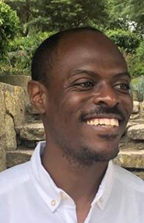
By Laurence Stacey
During a final meeting with students in my undergraduate peace studies course, we discussed the role of arts in helping us imagine alternatives to war and other forms of violence. As with many of our conversations, I asked them to reflect on how their understanding of topics such as nonviolent resistance or peacebuilding was informed by the artistic works, they had studied during the 16-week period.
For some students, the films, graphic novels, and poetry included in their coursework highlighted experiences of conflict that challenged many of their fundamental assumptions. For others, analyzing conflict through rhetorical devices such as metaphor or setting provided them with valuable practice in locating stories that are not always immediately evident in mainstream discourses about conflict.
Like many peace educators, my work is grounded in helping students develop skills and perspectives conducive to addressing conflict nonviolently. This includes different methods of conflict resolution, with theories from international relations, sociology, and other fields. However, it also includes understanding how rhetoric is connected to ideas of peace, conflict, and social justice.
As a scholar with a background in humanities, my approach to rhetoric centers on literary and visual arts as aesthetic acts, a concept described by scholar Carrol Clarkson as encounters that help us “reset social perceptions of what counts and what matters, especially in relation to questions of social justice.”
By making us aware of stories, arts can shape how we perceive communities and the conflicts they experience. In the 90s, the music of hip-hop artists such as Tupac and Queen Latifah often served as PSAs regarding issues that impacted urban Black and Brown communities. These works were unapologetic and expressed the dreams and frustrations of people who had been economically marginalized. Like many storytellers from the margins, these artists asked questions in ways that “talked back” or interrogated how their communities were perceived by outsiders. They also pointed to the importance of art in depicting the complexities of conflict.
This idea is echoed by my students, who often point out that stories are “messy” and do not fit neatly into the theories we use to describe the world. As a result, they remind us to question dualistic ways of seeing problems and potential solutions that might emerge.
Arts do theorize issues of peace and justice. However, these theories are presented through rhetorical devices used to show readers how these politics are navigated in personal and sometimes surprising ways. This was made apparent to my students during a reading of Octavia Butler’s 1998 novel Parable of the Talents. Set in a speculative and dystopian 2032, “Parable” explores connections between issues such as mass incarceration and the subjugation of women. Throughout the novel, Butler’s characters must negotiate feelings of fear, distrust, and anger, while also trying to rebuild communities destroyed by the brutal policies of the “Donner Administration.”
For students, hearing and grappling with stories like “Parable” is valuable in developing a peace-oriented worldview. Unpacking stories requires that students examine their own standpoints in regard to specific issues. In the process, they can develop a practice of self-reflexivity that extends to both their personal and professional lives.
Students do not necessarily enter classrooms with an understanding of how arts relate to the study of conflict. For educators, this means that we must think deeply about how media informs student perceptions of various issues. Arts are often utilized in peacebuilding. However, students should also understand that arts are routinely used to justify war, discrimination, and other forms of violence. This is perhaps best illustrated in games such as Call of Duty, which not only depict war as thrilling, but have also rewritten histories of US war crimes, such as the “Highway of Death” at the end of the Gulf War.
Artistic works are not created in a vacuum and it is important that students understand the contexts that shape their development. Unpacking their rhetorical devices can help students better understand how they contribute to social discourse. It can also prevent students from simply assuming that all art is oriented toward peace or justice. This is especially important for students who might pursue activist work, where art is often used to build solidarity between groups.
In my experience, it is not enough to simply ask students to discuss a novel, painting, or photograph. They must also be introduced to practices that teach them how to recognize and unpack specific aspects of the texts they are studying. When introducing students to artistic works, I usually begin with discussions and examples of how particular aesthetics work; including the ways they have historically been used to frame discussions of conflict, peace, or justice.
In addition, assignments that require students to draw connections between artistic works and theories of conflict can help them gain confidence in discovering new insights for themselves. Finally, incorporating art into peace curriculums is not a linear process. Students interpret texts in a variety of ways and based on a number of factors beyond the classroom. Therefore, we must be prepared to continually reexamine works that we include in our syllabi, approaching them with the same inquisitiveness that we ask of our students.


Be the first to comment